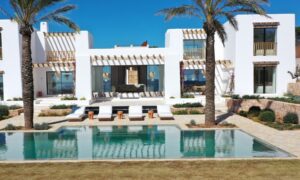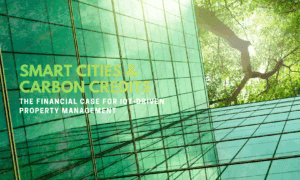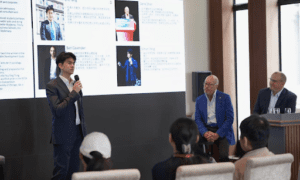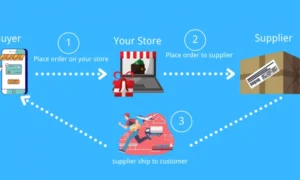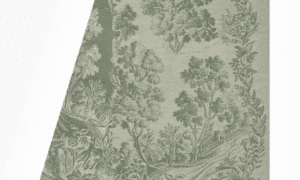Increasing numbers of Spanish seniors are exploring ways to tap into their home equity without losing the roof over their heads. One emerging solution is venta de inmueble con usufructo, meaning the sale of a property’s bare ownership while retaining a lifetime right of use. In this arrangement, often referred to as a bare ownership sale with usufruct, the homeowner (usually over 65) sells their nuda propiedad (bare title) to an investor but keeps the usufructo (right to live in or use the property) for the rest of their life. This model allows the seller to receive a lump-sum payment upfront while continuing to live in their home. It’s an attractive alternative for retirees who need liquidity but are emotionally attached to their home and don’t want to move out.
However, as with any real estate transaction, it’s important to understand the legal and tax implications of selling under a bare ownership + usufruct structure. Below, we break down how nuda propiedad y usufructo work together and how such a sale is treated under Spanish law — particularly Spain’s IRPF income tax.
Understanding the Structure: Bare Ownership vs. Usufruct
To grasp this concept, remember that owning a property in Spain can be thought of as owning two distinct rights:
- Usufruct (Usufructo): The right to use and enjoy the property (live in it, rent it out, etc.).
- Bare Ownership (Nuda Propiedad): The title of the property without the use rights. The bare owner holds the deed but cannot occupy or use the home while someone else has the usufruct.
In a venta de inmueble con usufructo vitalicio (sale of property with lifetime usufruct), the homeowner sells the bare ownership to a buyer/investor and simultaneously reserves a lifetime usufruct for themselves. The immediate effects are:
- The buyer becomes the new bare owner (nudo propietario) and pays the agreed price to the seller. However, the buyer cannot take possession or make use of the property until the usufruct ends.
- The seller becomes a lifetime usufructuary, retaining the right to live in or use the property until death (or a specified term, if agreed). The seller gets a cash payment now and can stay in their home as if nothing changed, typically remaining responsible for routine expenses but not for major costs like property tax or structural repairs.
This kind of operation provides mutual benefits:
- Sellers (life usufructuaries) gain immediate liquidity without moving out. They unlock a portion of their home’s value to finance retirement, healthcare, or other needs, all while enjoying the comfort of their home for life.
- Buyers (bare owners) acquire a property at a discounted price. Because they must wait for the usufruct to end, they pay less than market value. Eventually, they will obtain full ownership and possession — often making this a profitable long-term investment.
Tax Treatment Under IRPF (Spanish Income Tax)
One critical aspect of selling your bare ownership is how it’s taxed. In Spain, property sales are subject to capital gains tax under the IRPF (Impuesto sobre la Renta de las Personas Físicas), but special conditions apply to seniors and primary homes:
- Seller over 65, selling primary residence: If you are 65 or older and the property is your main home, the capital gain from the sale of bare ownership is exempt from IRPF. In practical terms, this means qualifying seniors pay no income tax on the money they gain from this sale. This tax exemption is a major incentive that makes the nuda propiedad + usufructo model particularly attractive for elderly homeowners. (For instance, a 70-year-old selling bare ownership of her long-time home for €100,000 would owe zero euros in capital gains tax on that amount.)
- If not primary residence or seller under 65: The portion of the sale price attributable to the bare ownership is considered a capital gain. The seller must declare this gain in their IRPF annual tax return under the savings income category. The gain is calculated by comparing the sale price of the bare ownership to its proportional purchase price (taking into account what percentage of the full property value the bare ownership represents at the time of sale). Any profit is taxed at the standard savings income tax rates (which are progressive in Spain). The key point is that only the bare ownership’s value is taxed, not the whole property’s value. Any costs of the transaction (notary fees, etc.) or costs from the original purchase can be factored in to reduce the taxable gain.
- Additional regional considerations: Some autonomous communities in Spain offer their own tax deductions or have inheritance rules affecting such transactions. It’s wise to consult a tax advisor about local regulations. Also, if the arrangement is seen as part of estate planning, inheritance tax implications for the heirs (and how the reserved usufruct might be treated) should be reviewed on a case-by-case basis.
Bottom line: For most senior homeowners using this strategy on a primary residence, the tax law is favorable (no IRPF on the gains). Sellers who don’t meet the exemption criteria will need to pay capital gains tax on their profit, but since the sale amount is usually lower than a full sale, the taxable gain is correspondingly smaller.
Practical Advantages of This Model
Beyond tax, there are several practical reasons retirees consider this route:
- Stay in your home for life: You don’t have to leave the house you love. The transaction guarantees your right to live there until you pass away (or for the agreed period), so your daily life remains largely unchanged even though you’ve sold the property.
- Immediate cash influx: You receive a lump sum payment now. This can significantly improve your quality of life – enabling you to afford better healthcare, help out family, or simply enjoy retirement without financial stress.
- No loans or interest: This is not a loan, so you incur no debt and make no monthly payments. Unlike a reverse mortgage, there’s no accumulating interest eating away at your equity. You’ve sold an asset right, plain and simple, so you won’t owe anything to a bank.
- Simpler estate planning: Since the property’s ownership is settled, your heirs know what to expect. For those with no heirs or those who have other plans for their estate, this can be a way to consume your home’s value yourself, rather than leaving the entire value to others. (And if you do have heirs, you might choose to gift or invest some of the cash you receive to benefit them in a different way.)
All these benefits make the nuda propiedad + usufructo model a compelling alternative for seniors who want to avoid traditional routes like selling their home outright (and moving) or taking on a reverse mortgage.
Risks and Important Considerations
While the model is sound, it’s important to go in with eyes open:
- You give up ownership: Once the deal is done, you no longer own your home (legally speaking). You can live in it for life, but you can’t change your mind and sell it to someone else later, nor can you use it as collateral. The buyer will eventually own the home completely, so you must be sure this trade-off is right for you.
- Impact on heirs: If leaving property to your children was a goal, note that in this arrangement your heirs won’t inherit the house. After your passing, full ownership goes to the buyer automatically. Family members need to be informed and on board with your decision. In some cases, seniors without close heirs find this option ideal, whereas those with heirs might explore ways to compensate them (for example, with part of the money received).
- Longevity uncertainty: No one knows how long they will live. The price you get is based on life expectancy tables. If you live far longer than expected, you effectively got a great deal (as you enjoyed your money and home for many years). If you have a short lifespan after the sale, the buyer gains substantially. While this is the buyer’s risk, some people feel discomfort with the idea that their lifespan factors into someone else’s investment outcome. It’s a personal consideration.
- Professional valuation and advice: It is crucial to have the property and the usufruct valued by experts. The calculation should take into account your age, the property’s market value, expected duration of the usufruct, and prevailing interest rates. Engage a trusted real estate advisor or lawyer to ensure the sale price is fair. Additionally, have a lawyer draft or review the contract to protect your lifetime residency rights. Do not proceed without full clarity on the contract terms, including who pays which expenses during the usufruct and what happens if, for example, the buyer wants to sell their bare ownership stake (it can happen).
Given these points, involving professionals is a must. Companies like Kalma have teams of legal, tax, and real estate experts who specialize in these transactions and can guide seniors through the process step by step, ensuring that all safeguards are in place.
Conclusion
Selling the bare ownership of your home while keeping a lifetime usufruct is a novel way for Spanish seniors to achieve financial security. It’s legal, viable, and increasingly popular. For many, this approach strikes the perfect balance: you get to enjoy your golden years with extra cash in hand, all without leaving the home you love. Moreover, the tax advantages can be substantial, especially for those over 65 with a primary residence.
However, it’s not a one-size-fits-all solution. Every individual should consider their health, their financial needs, and their family situation before committing. It’s wise to compare this option with others (like reverse mortgages or downsizing) and to discuss it with family and independent advisors. With careful planning and the right advice, a nuda propiedad y usufructo sale can dramatically improve a retiree’s quality of life and peace of mind. It turns a house into a source of retirement funding, without the usual catch of having to leave it. For those who need liquidity but treasure their home life, this innovative solution is worth understanding and considering as part of a comprehensive retirement strategy.


